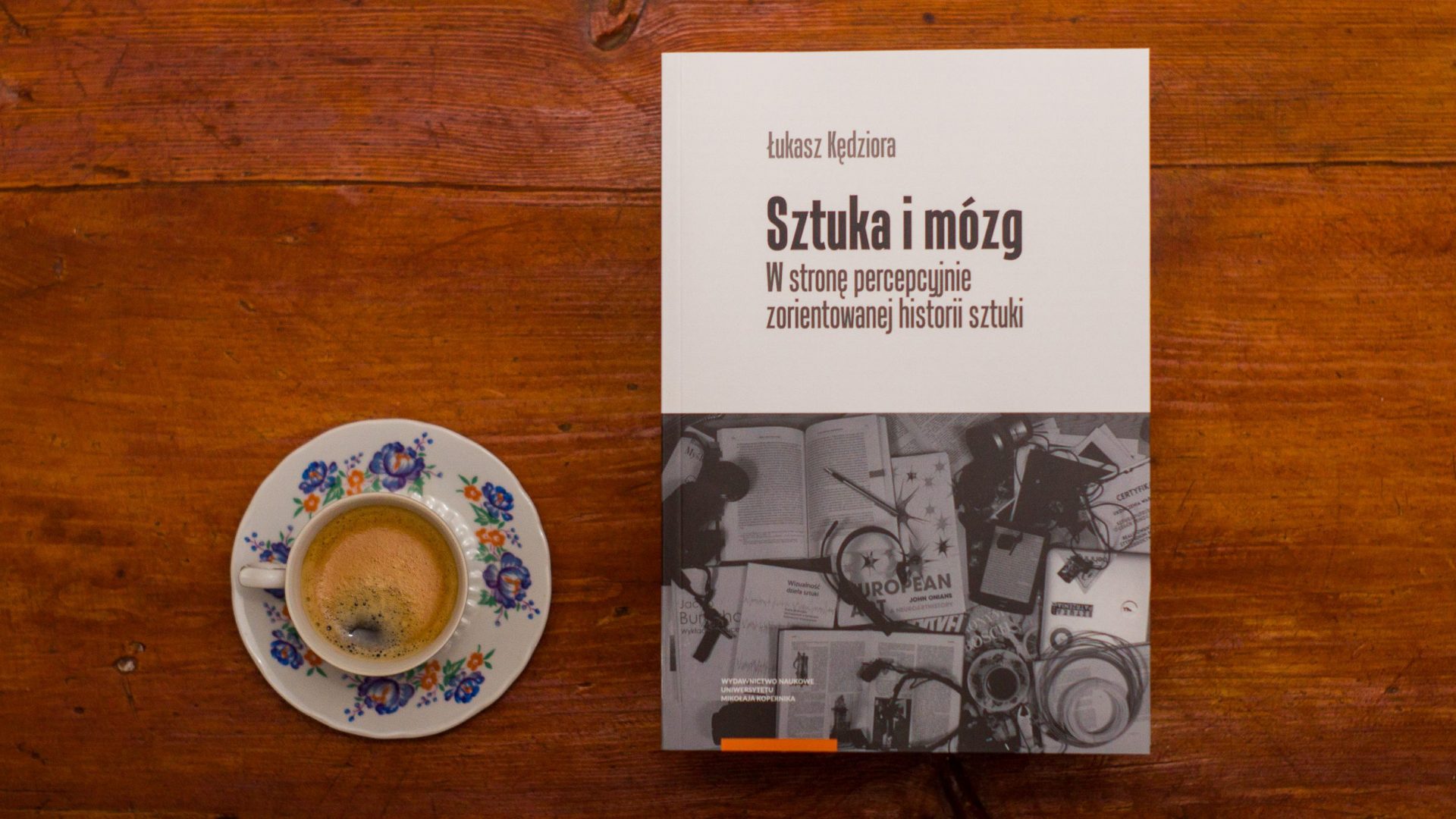PRINTED VERSION | EBOOK | ILLUSTRATIONS | ACADEMIA
WHAT THE BOOK IS ABOUT
The reflections on perception-oriented art history begin with presenting the reasons why the author of the book has decided to discuss the problem of combining methodological tools of art history and neurosciences. It is closely linked to the need for conducting transdisciplinary research that seems more and more observable among art historians. This necessity was recognised by the author already during his master’s degree studies, when the art history methodology turned out overwhelmingly influenced by conceptions and interpretations taken from philosophy, sociology, feminism and other common research perspectives of that time. Resulting from this trend (and present to this day), the artistic object has been given – both with regard to understanding and presenting its materiality, as well as visuality – secondary importance of interpretation. What such an approach to analysing the effects of artistic creation has led to is a ridiculous situation when historical, geopolitical and geographical contexts have “overshadowed” works of art themselves, and the “method” has become another off-the-shelf tool, chosen not because of its adequacy, but rather popularity or fashion. The author’s growing reluctance towards this “speculative” art history made him look for a different way of thinking about the artistic object, which would provide more tangible and perceptible interpretative paths as compared to the methodological legacy of postmodernism. It has turned out that the already existing and well-established perspectives concerning particular ways of looking at and seeing the work of art, such as Hans Belting’s anthropology of images, David Freedberg’s power of images, or visuality of the work of art developed by Georges Didi-Hubermann, do not seem to address (sufficiently) the issues connected with the physiological reception of the work of art.
The book has been divided into three complementary parts, each performing a different function. The first one, entitled The history of perception-oriented art history, is intended to place our reflection in the historical context of art history methodology. It consists of ten chapters that provide a critical analysis of interpretative theories and practices, developed by ten distinguished art historians, with regard to their connections with contemporary neuroscience. Not only should this approach prove the need for identifying perception-oriented art history, but it could also become the starting point for each art historian wishing to provide an interpretation based on the contemporary neuroscience. In other words, the historical meaning of “perception-oriented” research on art should serve as help and legitimization of the attempts made by today’s representatives of our discipline. The second part of the book, entitled The contemporary workshop of perception-oriented art history, includes a selection of theories, methods and perspectives connected with neuronal embedded mechanisms of interpreting works of art, presented in a critical, comprehensive way. Among the most recognizable ones we can mention: neuroarthistory, empathic response to the work of art, neurological theory of aesthetic experience, and the ambiguity theory. The issues discussed in this part constitute a kind of a guide for the researchers interested in providing interpretations based on the knowledge of neuronal embedded mechanisms for understanding art.
The last – third – part, entitled The perception-oriented art history in practice, consists of three chapters. Two of them present the opportunities resulting from conducting art research with the use of various tools measuring eye movement activity, EEG signal, and such parameters as EKG, breath rate, body temperature or HRV. The third chapter provides a theoretical reflection on the possibility of creating a new system of art periodisation, based on our knowledge of different mechanisms of perception. The aim of this part is to show how an art historian, in cooperation
with representatives of other fields, can conduct experiments that might provide answers for significant and deeply-rooted questions regarding our discipline.
Another important part of the book consists of an online selection of supplementary materials published on the author’s website. For instance, the readers will find there an interview with prof. John Onians (both written and audio version), conducted by the author of the book. The materials include a graphical bibliography describing the simultaneous development of neuroscience and history of art, developed in cooperation with the British professor.
Among the appendices there are also recordings from eye-tracking experiments, as well as links to numerous photographs, paintings and visualizations.
REVIEWS
The questions asked by the Author are reasonable, accurate and non-trivial. Well-practised cognitive science must include elements of empiria, and the researchers who call themselves cognitivists, need to demonstrate methodological knowledge about this challenging interdisciplinary area. (…) The author provides professional analyses and descriptions of his research, including eye-tracking experiments concerning cognitive aspects of perceiving works of art. The selection of the research presented has been well-thought and is precisely to answer the questions posed by the Author, at the same time providing arguments that support the ideas discussed in the thesis. There is no room for any randomness. This way, the Author’s work becomes a field of research itself.
PROF. Dr hab. Anita Pacholik-Żuromska, NICOLAUS COPERNICUS UNIVERSITY IN TORUŃ
AWARDS
In 2019, the book manuscript (PhD thesis) was honoured with the prestigious Szczęsny Dettloff Award for the best doctoral dissertation in the field of art history, granted by the Art Historians Associations in the category of unpublished works. Read more
Feel invited to discussion on a slightly “different” approach(es) to analysing works of art!
Łukasz Kędziora, Sztuka i mózg. W stronę percepcyjnie zorientowanej historii sztuki
ISBN: 978-83-231-4771-8
Year of publication: 2022
Number of pages: 376
Edition number: first
Cover type: paperback
Format: 158 x 228 mm
Publisher: Wydawnictwo Naukowe Uniwersytetu Mikołaja Kopernika
eISBN: 978-83-231-4772-5
DOI: https://doi.org/10.12775/978-83-231-4772-5
